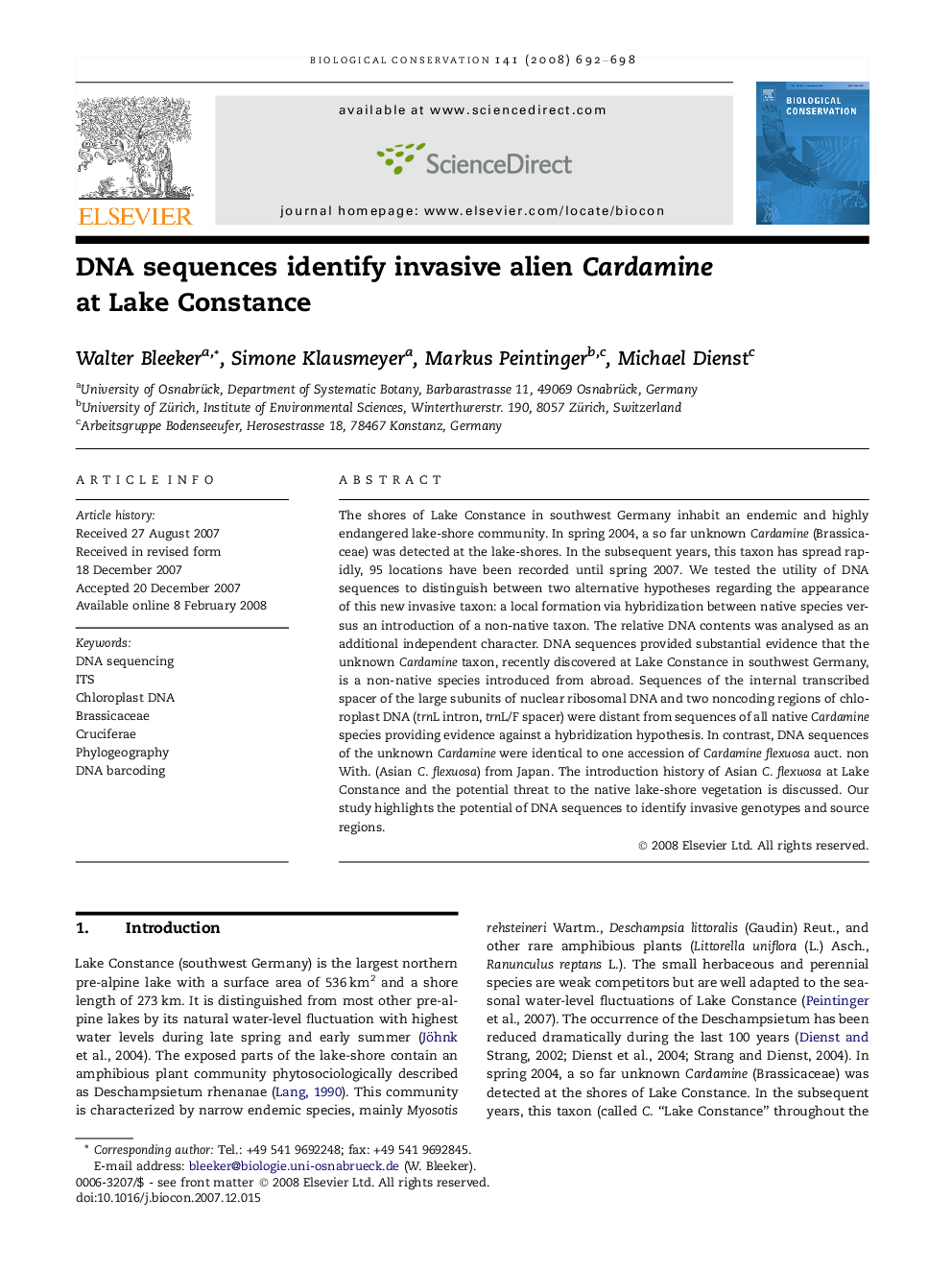| Article ID | Journal | Published Year | Pages | File Type |
|---|---|---|---|---|
| 4386728 | Biological Conservation | 2008 | 7 Pages |
The shores of Lake Constance in southwest Germany inhabit an endemic and highly endangered lake-shore community. In spring 2004, a so far unknown Cardamine (Brassicaceae) was detected at the lake-shores. In the subsequent years, this taxon has spread rapidly, 95 locations have been recorded until spring 2007. We tested the utility of DNA sequences to distinguish between two alternative hypotheses regarding the appearance of this new invasive taxon: a local formation via hybridization between native species versus an introduction of a non-native taxon. The relative DNA contents was analysed as an additional independent character. DNA sequences provided substantial evidence that the unknown Cardamine taxon, recently discovered at Lake Constance in southwest Germany, is a non-native species introduced from abroad. Sequences of the internal transcribed spacer of the large subunits of nuclear ribosomal DNA and two noncoding regions of chloroplast DNA (trnL intron, trnL/F spacer) were distant from sequences of all native Cardamine species providing evidence against a hybridization hypothesis. In contrast, DNA sequences of the unknown Cardamine were identical to one accession of Cardamine flexuosa auct. non With. (Asian C. flexuosa) from Japan. The introduction history of Asian C. flexuosa at Lake Constance and the potential threat to the native lake-shore vegetation is discussed. Our study highlights the potential of DNA sequences to identify invasive genotypes and source regions.
